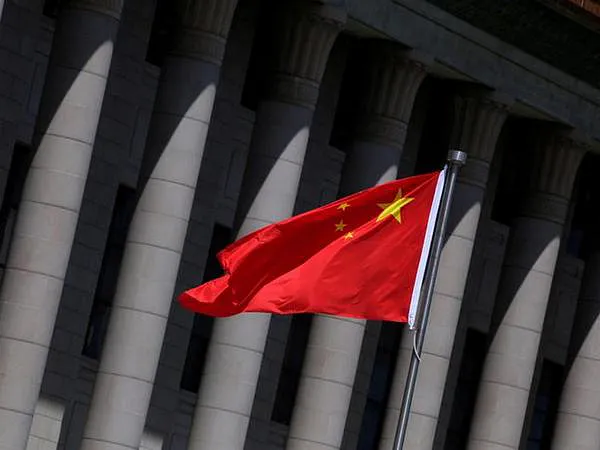China, Pakistan’s all-weather ally, is installing more than 500 surveillance cameras in the city of Gwadar, fueling speculation that it was not meant to be a port for trade. It was built as a naval base. Meanwhile, the former Balochistan board chairman revealed that many people are being forcibly moved from Gwadar to accommodate a gated community project for Chinese companies.
The information was disclosed by WLVN Analysis, Geopolitics, Defense, National Security, Wars and Aviation. Chinese companies enjoy the lion’s share of the benefits from the China-Pakistan Economic Corridor (CPEC) and its negative impact directly affects the local population in Pakistan.
According to Islam Khabar, Pakistan is also falling into the “all-weather friendly” debt trap of China. Moreover, in 3-5 years the world is also expected to witness clashes between Chinese and Pakistani forces on a regular basis. The increasing presence of Chinese citizens in Pakistan with the right to bear arms for self-defense as well as the presence of the Chinese army is a case in point. Pakistan will have to deal with more than 250,000 armed Chinese nationals in the future.
Pakistan’s economic crisis looked more bleak after more than two dozen Chinese companies or independent power producers (IPPs) threatened to halt operations at power plants on May 9, if payments are not made in advance, media reports said. Reportedly, Pakistan has to pay more than 300 billion Pakistani rupees ($1.59 billion) in dues to several Chinese companies, which are operating in Pakistan.
There are more than 30 Chinese companies operating under the China-Pakistan Economic Corridor (CPEC) on various infrastructure projects in various fields such as energy, telecom, railways, roads and highways – across Pakistan to facilitate trade connectivity. There were countless complaints from the Chinese side, including those related to complicated visa procedures for Chinese executives, exorbitant taxes and so on.
About 25 representatives of China’s independent power producers (IPPs) spoke one by one, complaining about the backlog of their dues and warning that without advance payments, they will be closed within days, according to Islam Khabar. In March 2022, with China threatening to halt the multi-billion dollar China-Pakistan Economic Corridor due to differences in cost estimates and contractual disputes, the question of late payments owed to Chinese independent energy producers (IPPs) is approaching a breaking point.
Reports claimed that Beijing was reluctant to inject new funds under the CPEC arrangement until the difficulties faced by Chinese investors were resolved and previous agreements related to the CPEC were fully respected by Pakistan. Beijing has expressed concerns about non-payment of electricity dues for some time, including at the highest level during Imran Khan’s visit to Beijing in 2022.
Geopolitical issues are also supported in Pakistan, where the Baloch insurgency is a constant threat to peace and stability. Baloch insurgents regularly target the corridor’s infrastructure projects, such as gas pipelines and electricity towers, because they view China as an imperial power that, along with the Pakistani government, wants to plunder Balochistan’s natural resources. China certainly faces a difficult situation in Pakistan. There may have been no departures of Chinese workers from Pakistan after the Karachi University attack, but they appear less confident about the country’s ability to protect them.
The CPEC project began in 2015. In April 2015, Chinese President Xi Jinping visited Islamabad to inaugurate the CPEC, a US$46 billion investment in Pakistan’s energy and transportation sectors. As part of China’s One Belt One Road (OBOR) initiative, the China-Pakistan Economic Corridor is planned to endorse regional links between Pakistan, China and Eurasia. The two sides set up a “1+4” cooperation model, which means that the two sides take the Pakistan Economic Corridor as the core with priority given to Gwadar, energy, transportation infrastructure and industrial cooperation.
The Chinese side of the corridor’s vision is to promote the western development strategy, promote economic and social development in western China, accelerate the construction of the Belt and Road, make room for China’s advantages in capital, technology, production capacity and engineering operation, and help form a new open economic order that is China-friendly. On the other hand, the vision of the Pakistani side is to fully harness the country’s demographic and natural endowments by developing its industrial capacity through the formation of new industrial clusters, complementing regional economic and social growth, enhancing people’s happiness, and nurturing inner peace. and stability.
However, only three schemes have been announced by the CPEC authority, including the US$4 million Gwadar Smart Port City master plan. The other two schemes are the physical infrastructure of Gwadar Port and Free Zone – Phase One at a cost of US$300 million and the Pakistan Technical and Vocational Institute built with a Chinese grant of US$10 million. To maintain the slow pace of various projects and other challenges, it can be said that the ambitious China Economic Corridor envisioned by Xi Jinping and Nawaz Sharif in 2015, is arguably unlikely to achieve, according to Islam Khabar.
Pakistan had great hope from the start with this huge multi-pronged investment under the Economic Corridor, but it must have approached it very carefully. Pakistan should be an equal partner rather than unleash China and be allowed to monopolize its energy sector. In January 2018, Dawn reported that contracts for Pakistani power and other projects including equipment and raw materials for projects imported from China had been rejected.

